Architects & Firms
“O Newton! With the range of your intelligence and the sublime nature of your genius, you have defined the shape of the earth; I have conceived the idea of enveloping you with your discovery. That is as it were to envelop you in your own self.” So the French architect Étienne-Louis Boullée described his 1784 proposal for a Cenotaph for Isaac Newton, an enormous, unadorned sphere, some 500 feet in diameter and rising out of a tiered base, its interior empty apart from a sarcophagus and a pattern of tiny openings representing the constellations of the night sky. Monument as earth, scientist at the center of the cosmos: this is the imagery of the Enlightenment, awesome and terrible in its hubristic scale.
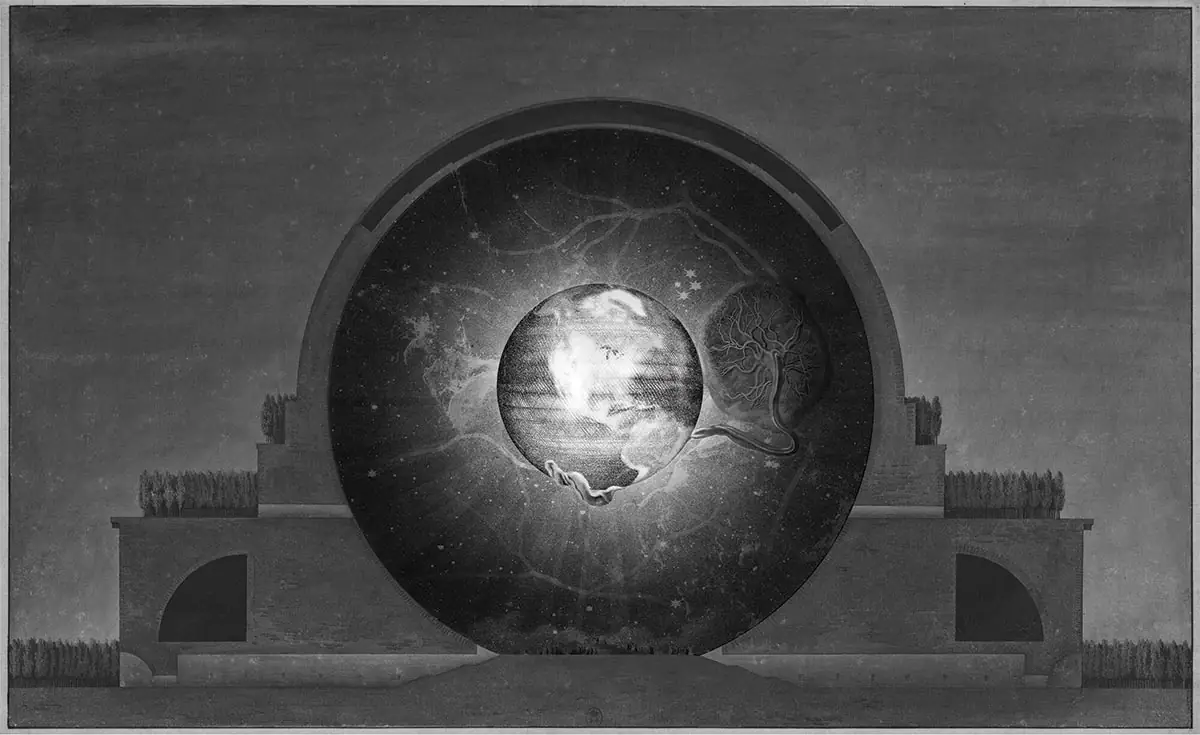
The Immaculate Conception, a 2023 illustration by Yaxuan Liu, depicts Boullée’s 1784 cenotaph as incorporating the Sphere. Image © Yaxuan Liu, click to enlarge.
It would take another 150 years for the scientific trajectory of the Enlightenment to reach its terrifying extreme in the form of world-destroying nuclear weapons. And it would take even longer, more precisely until earlier this fall, for Boullée’s monument to be completed—not as cenotaph but as entertainment venue, set along the Las Vegas Strip. There, the owner of Madison Square Garden, working with architects at Populous, has constructed a $2.3 billion, 17,600-seat venue enclosed within a sphere that, with a diameter of 516 feet, is by far the world’s largest, and the first to exceed the diameter of the Cenotaph for Newton. Like the Cenotaph, the Sphere (as it is known), is extreme in its apparent formal simplicity; unlike the Cenotaph, it is an unabashedly profit-seeking venture, and as a consequence is adorned with 1.2 million LED nodes that make it into a 360-degree digital billboard.
This digital display is also what enables the Sphere to become, via a fluid blue-green image, a more vivid representation of the earth than Boullée could have thought possible. This image, Sphere as earth, features in the renderings of the Sphere put out by its owners, as well as in many of the videos and photos that have circulated in the press and online since its September opening: the Sphere, it seems, is broadly understood to be an enormous miniature, the world’s largest scale model. And we are meant to occupy it. Actually, we are meant, as Boullée suggested, to be enveloped within it. For within the Sphere is a lavishly immersive “4D” theater, equipped, as the press materials have it, with a wraparound display that is the “highest-resolution LED screen on earth,” a “beamforming” audio system, artificial scents and breezes, even seating equipped with an “infrasound haptic system.”
The tension between this all-encompassing fantasy and the bleakness of the future facing the real earth is not lost on the Sphere’s owners. They have responded by commissioning Darren Aronofsky to direct a 50-minute film, produced to take advantage of the Sphere’s special capabilities and appropriately titled Postcard from Earth, that presents a story about humans who have left the planet after having ruined its environment. Those who go to see the film will indeed be enveloped by themselves—enveloped by their fears about the future blown up into an experience so intense that the building is equipped with sensory rooms for patrons who have panic attacks or otherwise need a break. Tickets start at $49.
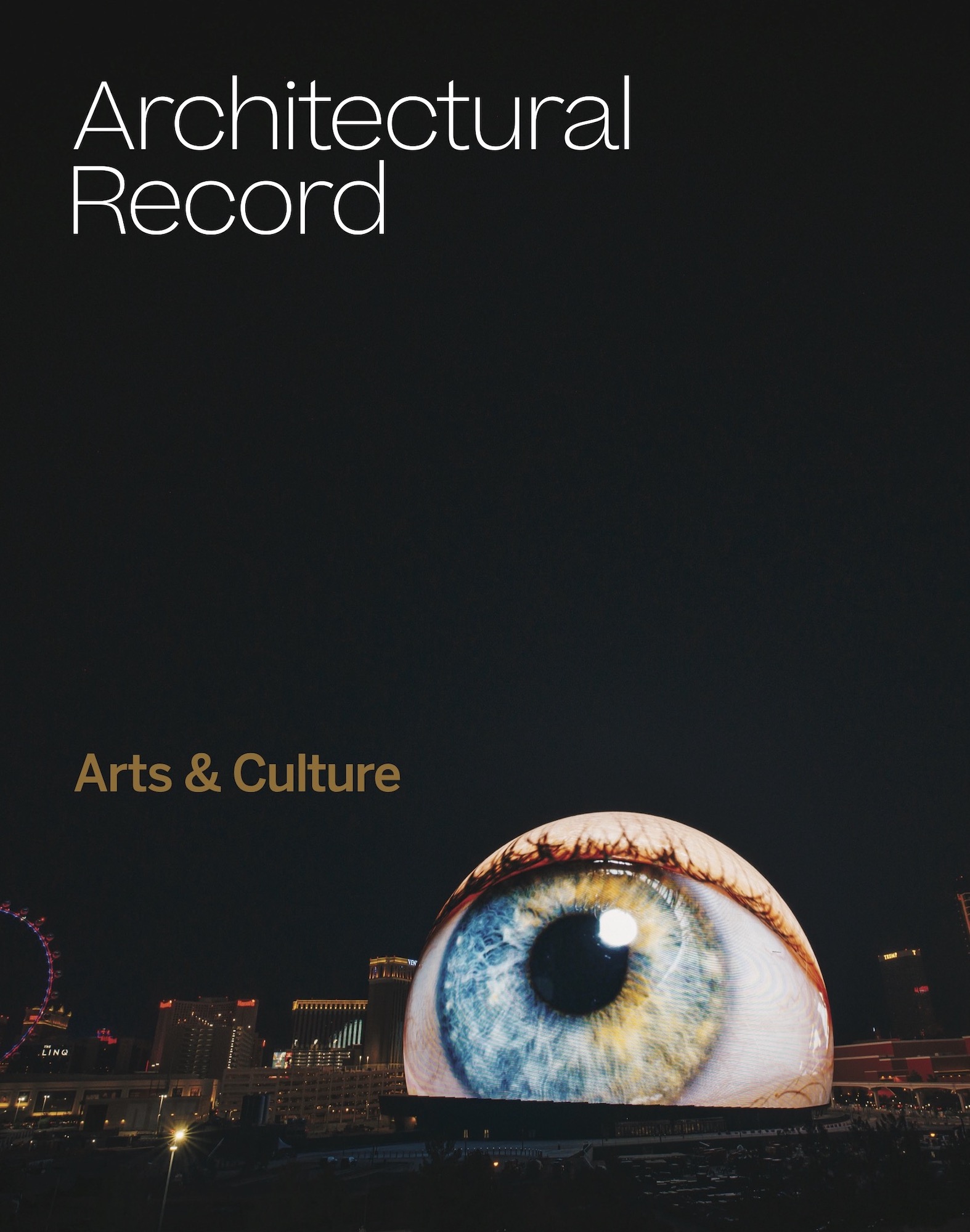
As the late Anthony Vidler noted, Boullée’s Cenotaph became in the 1960s a kind of poster project for Buckminster Fuller’s Spaceship Earth movement. Conscious of the threat of nuclear annihilation and of the risks of environmental degradation, Fuller and his acolytes sought to present earth as a delicate, scientifically constructed mechanism—a spaceship hurtling through the void—that could only be preserved through the collective efforts of all its occupants. This is also the moral lesson suggested by Aronofsky’s film. But the film’s plot also illustrates how closely tied Spaceship Earth was to a more self-important idea, that of humanity finding salvation through the discovery or creation of new habitats, new earths. In this way, Spaceship Earth takes us to another great sphere, Fuller’s still-standing U.S. Pavilion for the 1967 Montreal Expo, where visitors ascended a 135-foot escalator to enter an exhibit on NASA’s plans for the moon landing—and from there to the Fuller-inspired Biosphere 2 experiment of the late 1980s, in which a group of scientists occupied an artificially constituted ecosystem as a trial run for off-world settlement.
Aronofsky’s film aside, the Sphere lacks such an explicitly pseudo-utopian program. Nonetheless, like those earlier projects, the Sphere oscillates between the twin poles of representing earth (through its exterior symbolism) and reproducing it (through its immersive interior), and it does so at yet another moment of anxiety. In the end, it doesn’t matter much whether the suggestion is that we save our world or go build another one; either way, the promise is that we will find a way to redeem ourselves. Nowhere is this final point made more poetically than in yet another phantasmal image of the Enlightenment, Claude-Nicolas Ledoux’s 1804 elevation drawing for his cemetery at the imagined ideal city of Chaux. In plan and section, the project appears as an orthogonal structure centered around a spherical void. But in the engraving that Ledoux marked as an elevation, the void has turned solid and become earth itself, and the rest of the building has fallen away, as have its worldly surroundings. Here in the afterlife, the sun shines brightly and the miniature planet floats on a gentle bed of clouds. Far away from the ruination of the old earth, the dead live on in a new world, different from our own and yet exactly the same.
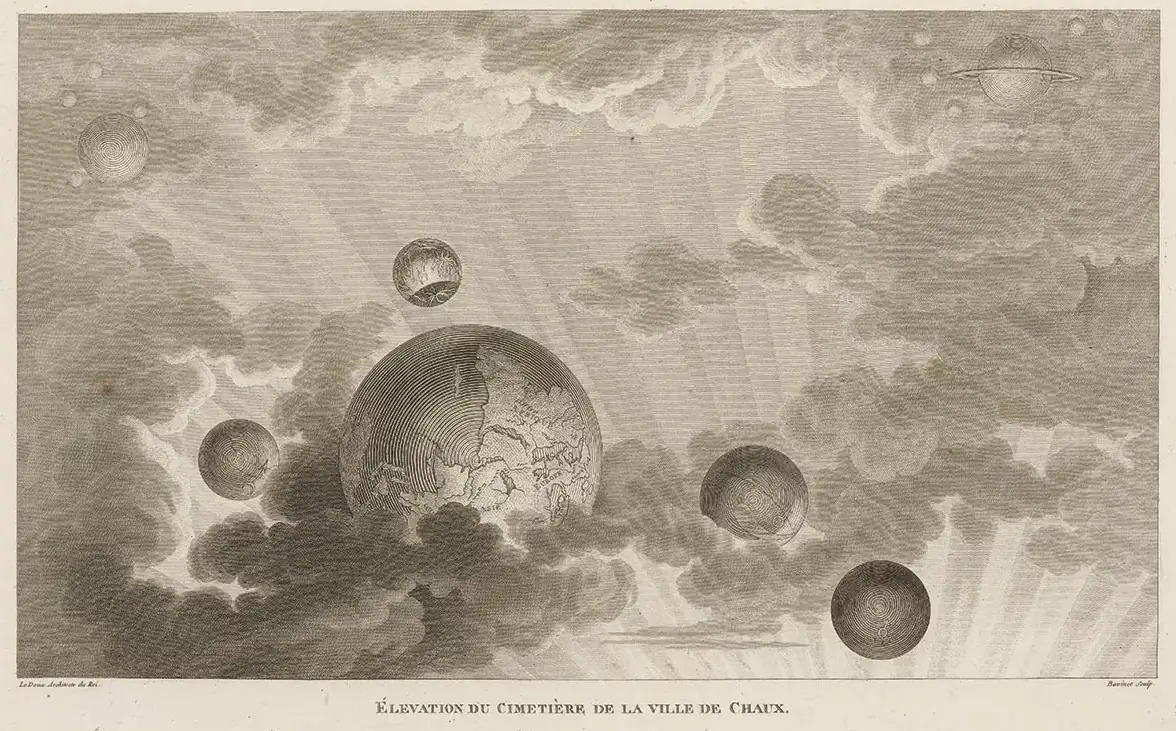
An 1804 engraving after a Ledoux design imagines a cemetery of Chaux. Image © Bibliothèque Nationale de France
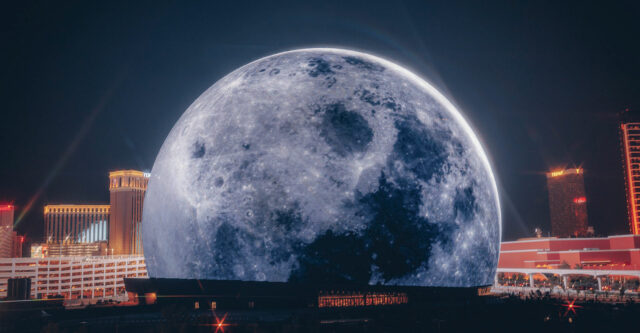




.jpg?height=300&t=1713468361&width=300)
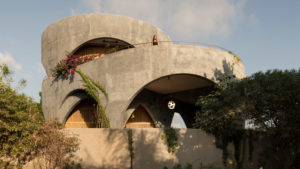



Post a comment to this article
Report Abusive Comment